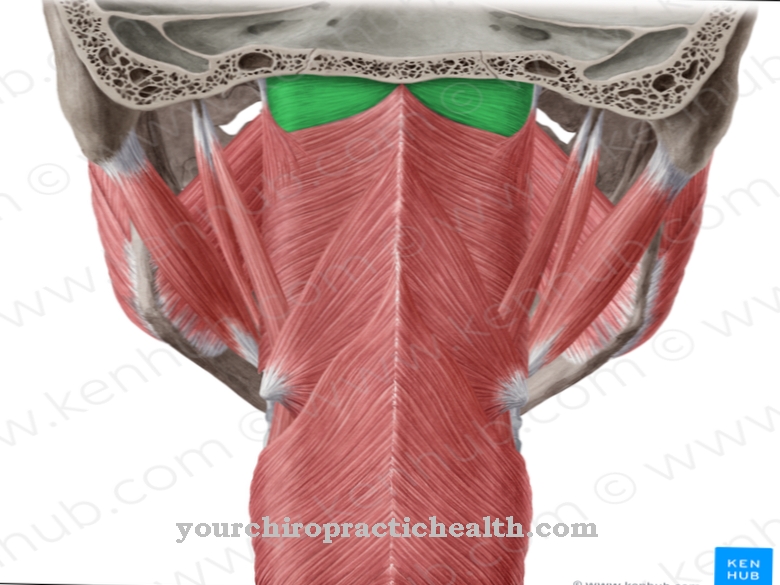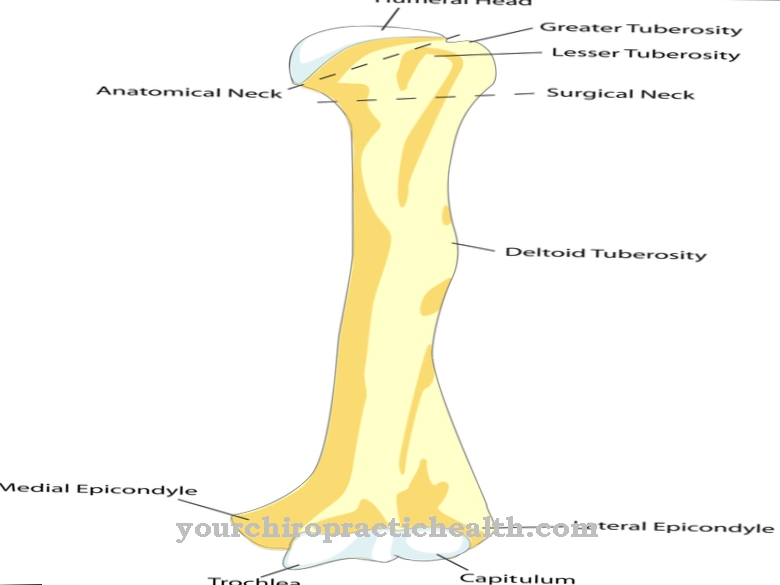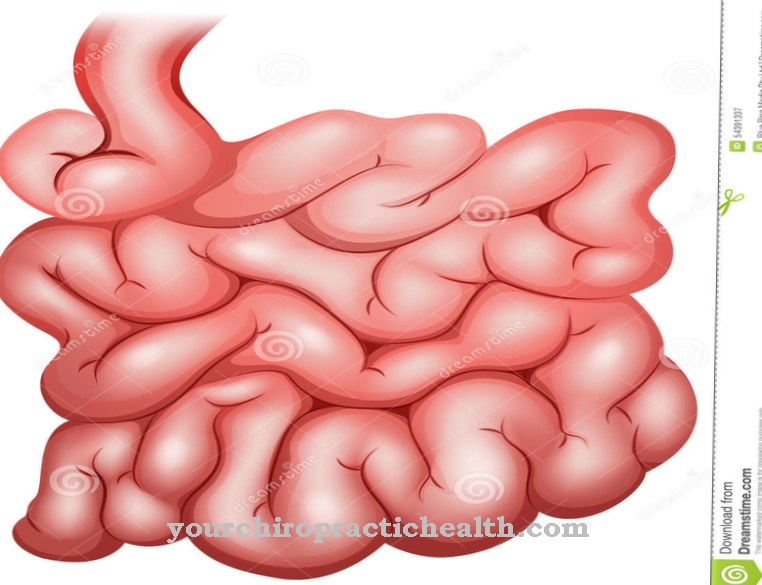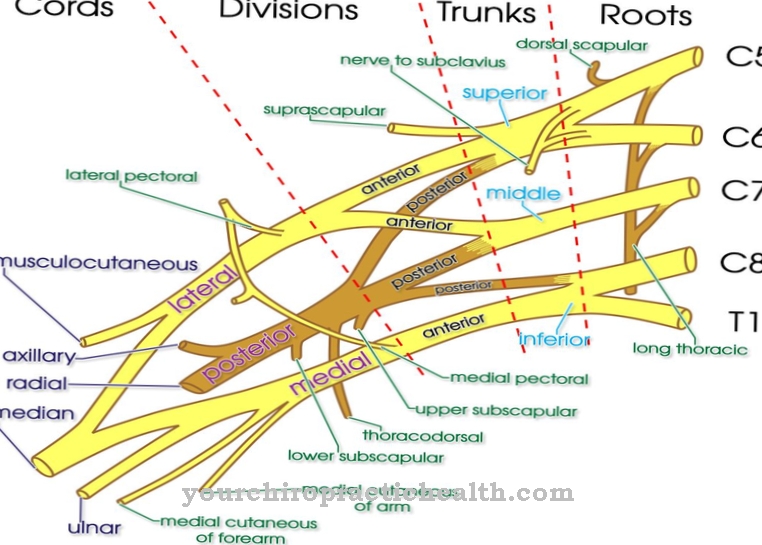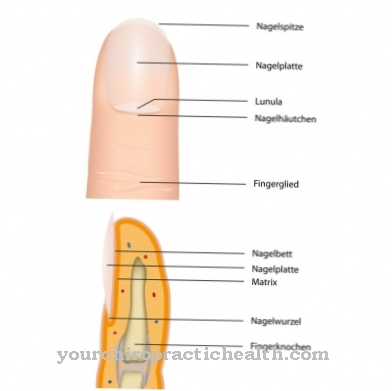The Radial artery Together with the ulnar artery, it forms the continuation of the humerus artery, which branches in the crook of the arm into the above two arteries via a bifurcation. On its way to the thumb and other fingers, it pulls along the spoke (radius) and forms a series of secondary branches on the forearm, wrist and hand. The artery above the wrist is often used to measure heart rate.
What is the radial artery?
The radial artery, too Radial artery called, together with the ulnar artery, forms the main forearm arteries, both of which arise at the bifurcation of the brachial artery (humerus artery) in the crook of the arm. As the radial artery runs along the spoke of the arm, also called the radius, the ulnar artery runs along the ulna or ulna.
Both arteries are the main vessels that supply oxygenated blood to the forearm, wrists, and fingers. On its way to the hands, the artery gives off a series of secondary branches that supply the surrounding areas, including muscles. Some of the transverse end branches in the hand, the rami perforantes, form anastomoses, i.e. direct connections with the arteriae metacarpales palmares bypassing the capillary systems. These are additional branches of the arterial branches that also branch off from the radial artery.
Anatomy & structure
The brachial artery or humerus artery divides in the crook of the arm into the two main branches of the radial artery and the ulnar artery. The radial artery and its branches in the area of the forearm, wrist, wrist and branches that supply the parts of the fingers as well as all other branches are anatomically included in the muscular arteries, although the elastic arteries near the heart are not always properly connected to the arteries of the distinguish between the muscular type.
While the large elastic arteries are mainly involved in the passive Windkessel function and therefore consist mainly of elastic fibers in their middle wall, the media, the subordinate arteries are characterized by smooth muscle cells that surround the media in a circular or oblique, helical manner.
The smooth muscle cells can react to certain messenger substances and stress hormones with contractions, so that the lumen of the arteries can be changed within certain limits, which has a direct influence on blood pressure. Also existing elastic fibers in the tunica media indicate that the arteries are mixed types or transitional forms with an emphasis on muscular.
Function & tasks
The main task and function of the radial artery is to supply certain tissues and muscles in the forearm, wrist and hand with oxygen-rich blood. The oxygen-rich blood is not brought into the capillary plexus from the artery itself, but rather via smaller arteries that branch off from it.
The oxygen-rich blood comes from the pulmonary circulation and reaches the aorta via the left atrium and the left ventricle during the systolic tension and expectoration phase, from which the humerus artery branches off, which in turn splits into the radial artery and the ulnar artery. In addition to supplying the downstream vessels with oxygen-rich blood, the radial artery has another task. It is involved in the active regulation of blood pressure. The smooth muscle cells in the middle arterial wall react to stress hormones and messenger substances, via which vasoconstriction (vasoconstriction) and vasodilation (vasodilation) take place.
In acute stressful situations and in the case of high physical performance requirements, the peripheral vessels are constricted via the sympathetic nervous system in a vegetative way, and a cascade of further physical reactions takes place unconsciously. If the demand and stress phase subsides, the reverse process takes place via parasympathetic nerves, which collect or inactivate the stress hormones again.
The radial artery contributes to the active regulation of blood pressure, because the artery can mainly be assigned to the muscular type and reacts to the messenger substances of the sympathetic nervous system in the same way as the other arteries, whose median walls are equipped with smooth muscle cells. In vascular surgery, a section of the radial artery is often used as an endogenous replacement or as a bypass for a diseased coronary artery.
You can find your medication here
➔ Medicines for joint painDiseases
A specific disease that predominantly affects the radial artery is not known. However, like other muscular-type arteries, the ulnar artery can be affected by dysfunction and disease.
The most frequent problems arise from narrowing (stenoses) of the artery, which leads to reduced blood transport, so that the resulting symptoms are usually the result of an inadequate supply of certain tissue sections.Stenoses can be triggered by inflammatory processes or by arteriosclerosis, which lead to deposits of plaques in the walls of the arteries and which not only sclerotize the arterial walls and make them inelastic, but also gradually obstruct the blood flow because the plaques take up more and more space and become one total occlusion, a thrombosis, can set.
Symptoms similar to stenosis can also develop from infectious inflammation in the artery. Platelets tend to clump together. It is also conceivable that thrombi form elsewhere in the body and are carried over to the body via the blood vessel system. In very rare cases, a migrating thrombus can become lodged and pinched in the radial artery, causing a dangerous embolism. In extremely rare cases, aneurysms and bulges in the radial artery have also been observed. Such aneurysms can be dangerous if there is a spontaneous tear in the arterial wall, which results in a corresponding bleeding or bleeding.

